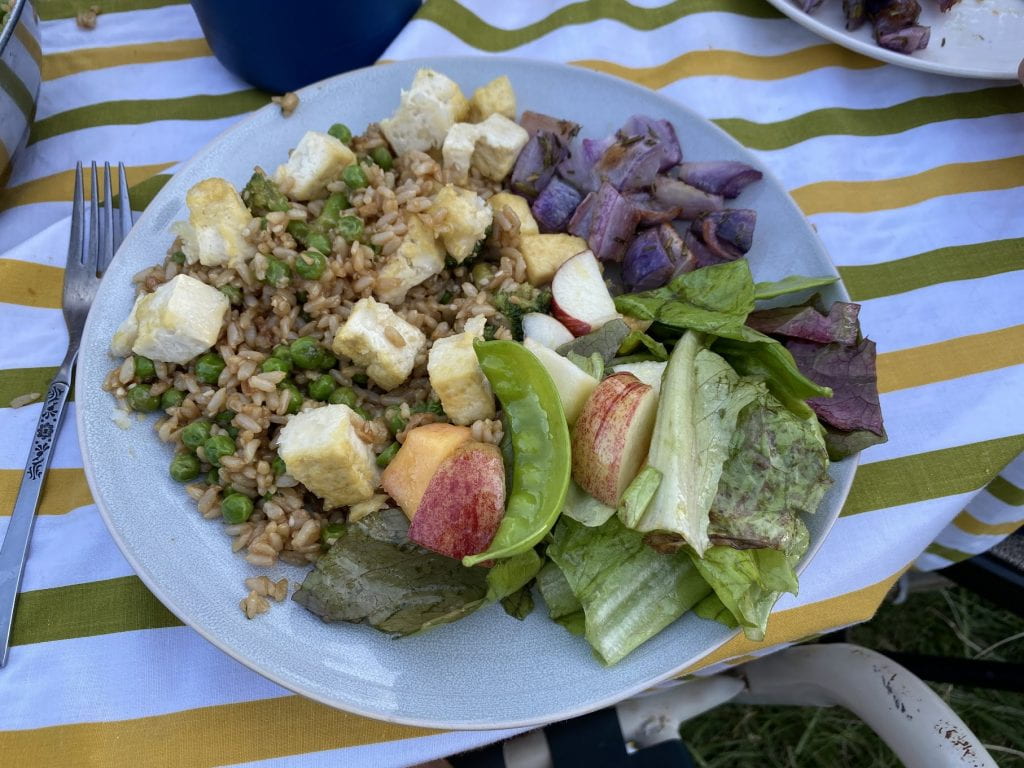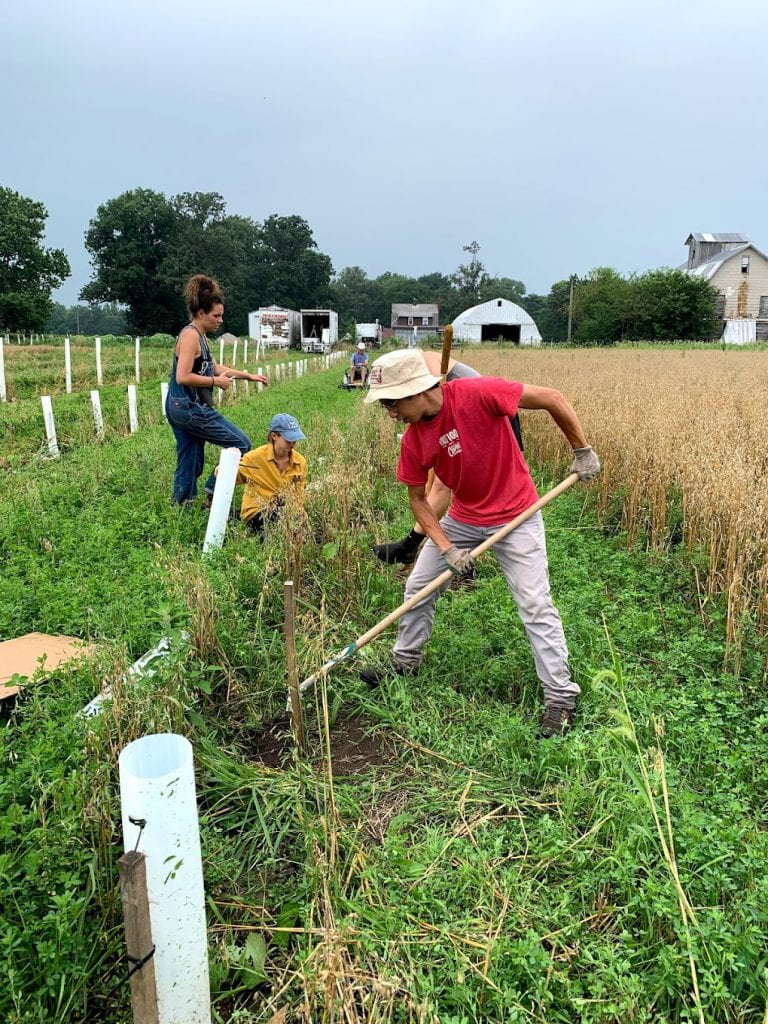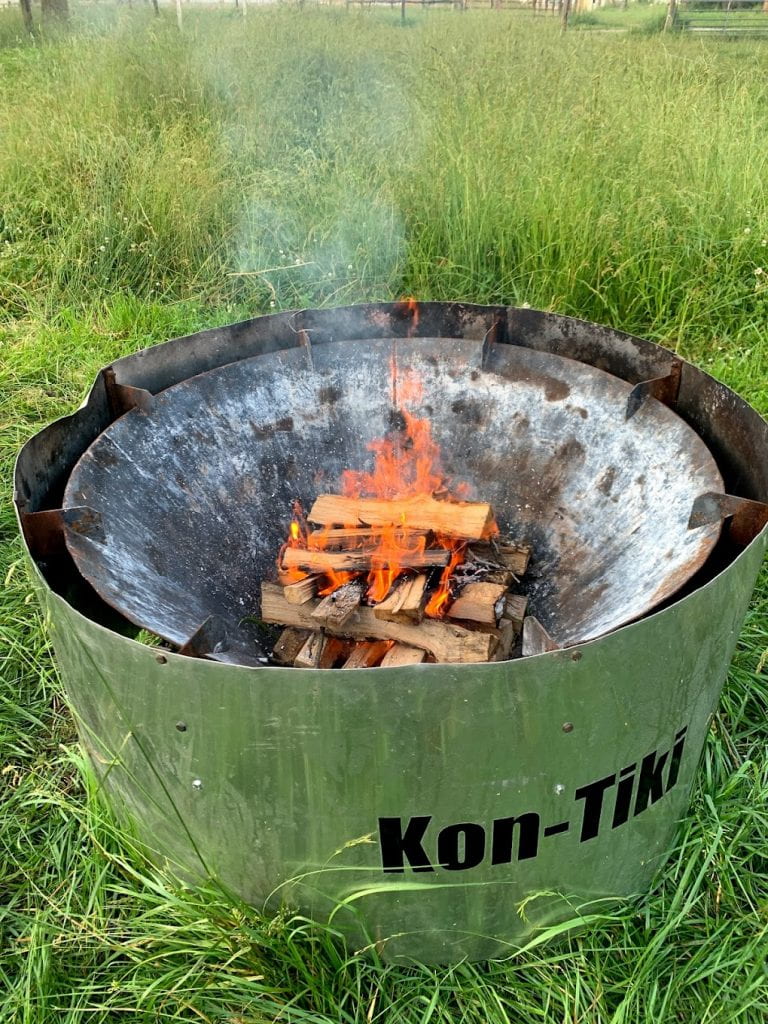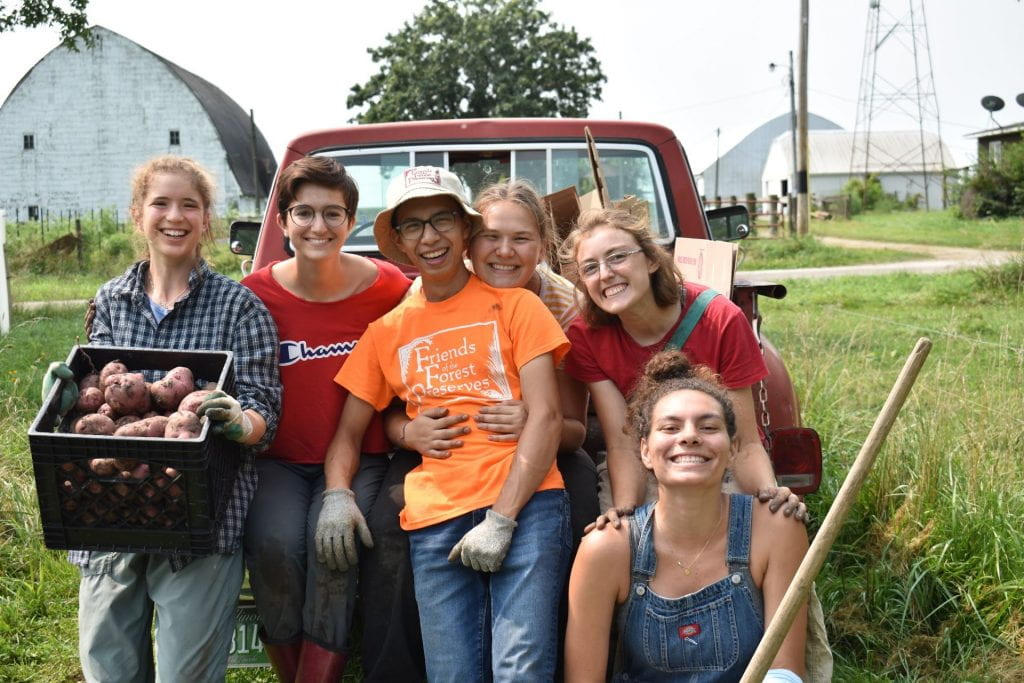Written by Office of Sustainability Student Associate, Stephanie Berger, Class of 2022
While many of my classmates spent the summer working in offices or on Zoom, I spent every day of my summer outside, working as a farm apprentice at Zumwalt Acres (ZA) in Sheldon, IL. Zumwalt Acres’ mission is ambitious: cultivating the land through horticulture and agroforestry using a diversified system focused on environmental stewardship, carbon capture, and Jewish values. It’s a new organization, founded in 2020 by Remi and Gavi Welbel, 6th generation farmers whose father, JR Zumwalt, grew up on the land. JR had long envisioned moving from monoculture to a more sustainable system of farming, and Remi and Gavi decided to take the year off of school during COVID to turn this vision into a reality.
I was part of the inaugural cohort of summer apprentices, a group of 11 people between the ages of 19 to 23 who were in charge of the farm’s day-to-day operations. The apprentices came in with a wide range of farming experience and relied on a network of neighbors, community members, and experienced farmers to help with the adventures that came with starting and running a farm. Personally, my experience only included growing up gardening in my backyard and having a lot of houseplants, so I had a lot to learn.
I was interested in working at ZA because I wanted to gain experience in food production. Food is not only a need for survival but also a large aspect of culture and community. Fresh, healthy food helps us connect with the earth and each other, and to nourish ourselves. Food production and agriculture are also large contributors to carbon emissions and other aspects of climate change, particularly with our industrialized monoculture system. After taking a class on food security at WashU, I realized I care about food production as a topic at the intersection of environmental and human-centered issues, and as something that is deeply intertwined with people’s experiences and identities. Zumwalt Acres is an organization that is trying to think about how to produce and distribute food in partnership with our land and our communities.
“Regenerative agriculture” is an idea that influenced our work at ZA and how we approach farming. Co-founder Gavi Welbel (also a fellow summer apprentice and friend) explains:
“When discussing regenerative agriculture, the emphasis is on regenerating the soil—literally bringing organic matter and microbial life back to the soil when so much of it has been physically eroded away and chemically killed through conventional practices. That said, it is impossible to separate soil health from the larger ecosystem including plants, animals, and humans. Healthy soil can be a catalyst for healthy food, for cleaner water, for more and better jobs, for increased biodiversity, and therefore for healthier communities. In addition, one practice on its own cannot make a farm ‘regenerative’—the whole farm/community must be taken into account when trying to create a healthier, more sustainable, and more just farm.”

In practice, this looks like incorporating methods like perennial agriculture/agroforestry, “organic-style” growing, planting pollinators and native species, crop rotation, and drainage systems that mitigate the impacts of flooding and runoff. We rely on the land and the soil for much of our food, and we need to take care of this ecosystem that we are a part of in order to ensure the health of the earth, the food, and the current and future organisms that consume that food.

At ZA, we made sure everything was accounted for by assigning each apprentice a few roles and areas of work that they had to make sure got done. My roles were Biochar Coordinator, Harvest and Food Safety Coordinator, and Goat Garden Bed Manager.
In addition to producing food for ourselves and our community, we also partnered with Yale University to investigate carbon sequestration tactics and completed field trials using our crops. Specifically, we experimented with basalt and biochar. From ZA’s First Year Impact Report, we detail how,
“By adding crushed up basalt to fields, we are hoping to speed up a naturally-occurring geochemical process known as silicate rock weathering. The basalt reacts with rain to convert carbon in the atmosphere into a compound stored long-term in the ground. Biochar is a form of organic material that has been burned in a way that locks in carbon dioxide that would otherwise be released into the atmosphere upon decomposition.”

As Biochar Coordinator, I was responsible for overseeing the process of burning and activating our biochar, which is a type of natural charcoal. This process was surprisingly similar to creating a campfire, but the goal is to allow the wood to char without letting it turn to ash, and we took measurements throughout. Starting the burns required this night owl to be out in the field by 5am, but it also gave me an opportunity to spend my mornings working with the trees that had died from emerald ash borer in order to repurpose their carbon to nourish the plants and eventually the people who would eat them.
As the bed manager for Goat Garden (the crops closest to the goat barn), I did daily walkthroughs to check on the plants and tasks that needed to be done, and I was also in charge of the research that was done in Goat Garden. Many of the rows had biochar and/or basalt, with control for each crop. For each of the research rows, we made regular qualitative observations and weighed our yield. We also took soil cores, temperature, and pH measurements every other week. The soil cores were mailed to the lab at Yale for analysis along with sharing our electronic data.
At the beginning of the summer, I was not very excited about my research responsibilities. There was so much to do on the farm and spending several hours with a soil core and pH meter just didn’t seem as satisfying as planting or building a fence. However, once I started my biweekly research, I really enjoyed the opportunity to sit down amongst the plants and complete the slow, steady process. It was a chance to rest and take in the incredible place we were located, something that was easy to forget with chaotic, long work days. I also felt like I was able to do a small part in contributing to research that could really help our environment (by trapping carbon), our food systems (by creating more food), and fellow farmers (by creating more yield).

Throughout my apprenticeship at Zumwalt Acres, I learned about cultivating the land, participated in an immersive teamwork experience to run a farm, contributed to soil carbon capture research, and saw firsthand the many challenges of growing food and getting it to people. I continue to be involved at ZA through the Alumni Leadership Council, and I’m excited to figure out how to use my skills and interest in food production to contribute to the community in the future.
If you have any questions or comments, please reach out to me at seberger@wustl.edu. For more information on Zumwalt Acres (or if you’re interested in being an apprentice!), check out our website at zumwaltacres.org.
Zumwalt Acres is located on the traditional unceded homelands of Kiikaapoi (Kickapoo), Peoria, Kaskaskia, Bodéwadmiakiwen (Potawatomi), Myaamia, and Očhéthi Šakówiŋ peoples.
